We all know that Thai football has never been healthier, right? Last season, over 1.3 million people went to watch a live Thai Premier League (TPL) game, with crowds averaging around 4,500 people a match. Every game was screened live by Truesport and NBT thanks to an investment of B135 million while sponsors have continued to flood into the game. SCG, one of the latest to get on the bandwagon, paid out a massive B600 million to attain a 30% stake in Muangthong United this season.
So what’s the reality, is the money coming into the game being spent wisely? Are there plans in place to develop the level of Thai football at both league and international levels? It seems that beneath the smooth surface, there are enough serious issues to get local fans worried.“It’s true that the TPL is very popular these days. It’s not real, though,” explains Komkrit Napalai, a long-time fan and media officer at TPL team Osotsospa M150 Saraburi FC. “People get excited because of the whole media hype around it. But if the existing problems continue, the popularity will eventually fade.”

Playing politics?
Those problems include the current precarious financial situation surrounding the clubs—an issue that has been brought into sharp focus recently by a very public clash between Buriram’s owner and former politician Newin Chidchob and the head of the Thai FA, the equally controversial Worawi Makudi. The main sticking point is over TV rights, a potentially lucrative source of income for the clubs, with Newin questioning the President of the Thai Premier League Dr Vichit Yamboonreung about where this money has gone.
The issue has even led Newin to form the Thai Premier League Club Allies, an interest group of 18 TPL clubs who have joined together to put pressure on the Thai FA for clearer change and transparency in all areas of the game. Komkrit is one person who thinks the idea of the Allies is good: “They’ll brainstorm what they want, what needs to be fixed. They’ll have the negotiation power to gain benefits for all of the TPL.”
Of course, there are those who doubt Newin’s true motives, with many believing that this might even by the first move by the wily politician in a run for the head job at the Thai FA. Whatever, the real reasons, the formation of the Allies did highlight one major issue that’s facing Thai football, money, where’s it coming from and where it goes.

Money, Money, Money
Running a club is now a very expensive business, leading Thai players can earn up to B300,000 a month with foreign imports costing even more. In fact, Team Manager and International Director of current TPL champions Buriram FC, Tadthep Pitakpoolsin estimates it can cost around B50 million a year to run a successful TPL squad.
In successful leagues around the world, the lion’s share of the money comes from broadcasting rights. In Thailand, these rights are controlled by the Thai FA except it’s actually a little murkier than that. As Newin uncovered in a recent public meeting with TPL boss Dr Vichit, the responsibility of managing these rights and other financial matters had been handed over to Siamsport Syndicate. The media giant played a big role in making the TPL so popular, but their boss is chairman of Muangthong United, and they also have a fairly cozy relationship with FA Chairman Worawi. The fall out caused by Newin’s question last month forced Siamsport to step down from their role as the FA’s financial advisors, though the real question as to where the money has gone has not been completely answered. However, for
once, it’s not just a question of potential corruption but a basic matter of economics.
“In Thailand, each club only gets around B10 million from broadcasting rights and ticket sales. That means they have to find around B40-50 million from sponsorship,” explains Tadthep.
“Attaining 60-80% of revenue from sponsorship depends on finding powerful investors, and on permutations like whether you win the league or a cup. In just one year, everything can change. That’s not a sustainable model, it’s impossible to make a long-term plan for development,” he continues.
Thanya Wongnak, Manager of BEC Tero Sasana, agrees that the financial issue is a long-term threat to the game. “The budgets to compete and succeed in the TPL are high and keep getting higher. I worry that we are investing too much money to improve the clubs; we are stretching ourselves too thin.”
It’s clear that these problems might already be surfacing. In a bid to appeal to those all-important backers and attract much-needed finances, many clubs have been forced to relocate and change names, with both Esan United (formerly Sisaket FC) and Osotsopa (who recently moved to Saraburi) just the latest examples. Meanwhile, rumors have circulated that some TPL clubs, and especially one Bangkok-based team, have already been unable to pay players due to a lack of cash.
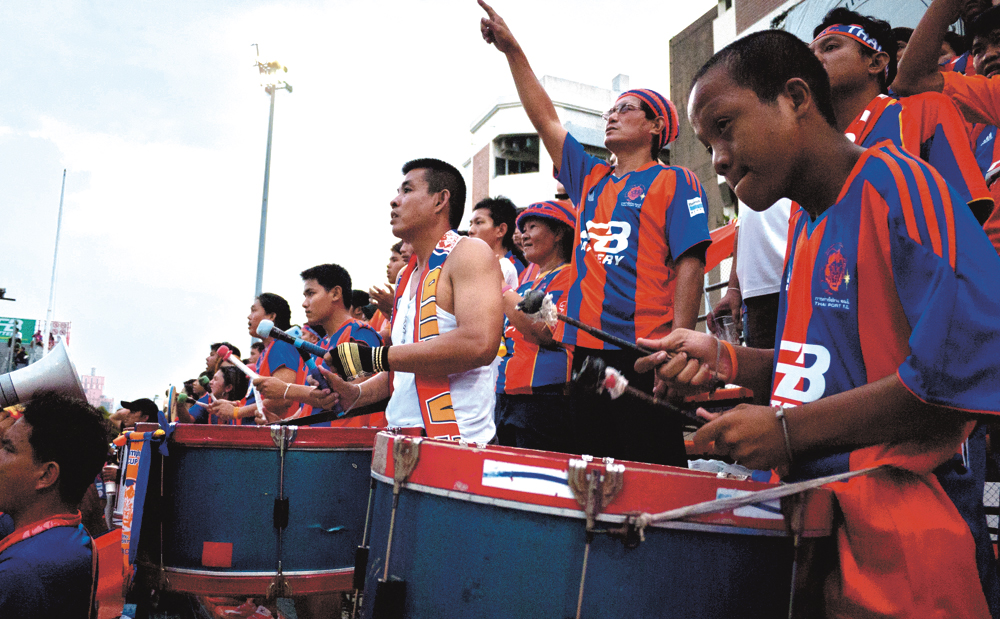
Always Walk Alone
Tadthep feels this is where the FA and the TPL authorities should be doing more. “They need to help us find more income and help control spending. They need to help clubs manage their finances to ensure that we don’t get into a cycle of boom and bust for clubs.”
Yet, TPL President Dr Vichit believes there is not much wrong with the current model. “I am a supporter of a full capitalist economy, so I don’t like too much interference. I think all we need to do is offer good guidelines, not try to control what people are doing.”
Osotsopa’s Komkrit is not surprised at this attitude from the governing bodies and feels it underlines a general malaise in the game at the highest level. “Each club has to learn and struggle for themselves. The FA and the TPL don’t do a single thing to help them.”
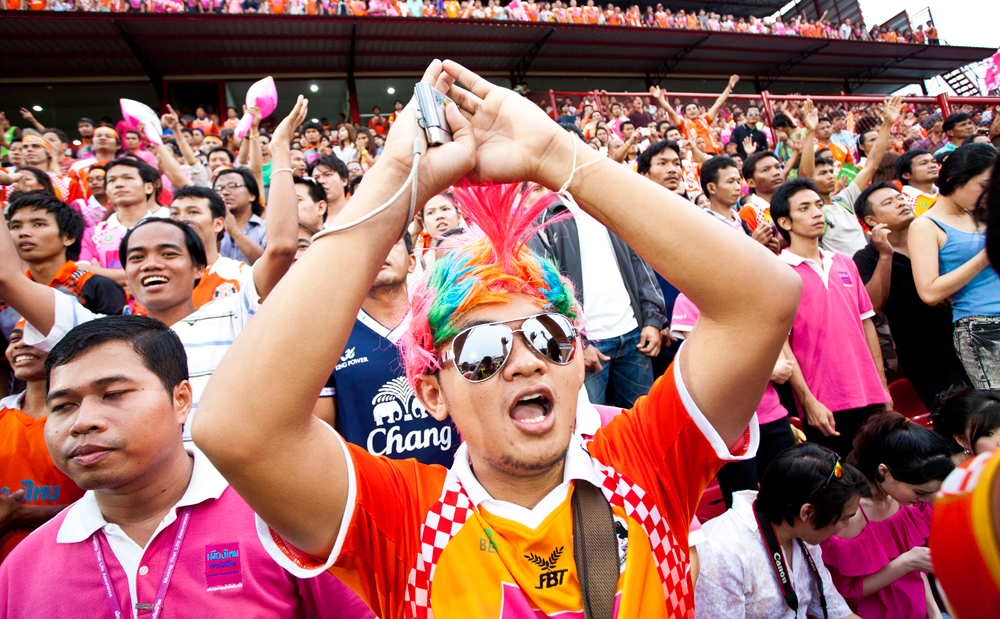
Going Global
Aside from the financial issues, this malaise is perhaps most keenly felt when considering the fortunes of the national team. Back in 1998, Thailand’s War Elephants, held a heady FIFA world ranking of 43; today they languish down at 141, sandwiched between Belize, with a population of just 300,000 and the tiny Eastern European state of Moldova (pop. 3.5 million).
“There’s a huge gap between the league and the national team,” says Tadthep, who questions why Thai players who compete at the highest level in Asian Cup competitions, like the Asian Champions League, then struggle when playing for the national squad. “Clearly something is wrong at the national camp.”
Perhaps surprisingly, considering his close ties with the FA, even Dr Vichit thinks it’s pretty clear where the issues with the national team lay: “If the FA had done a good job, then we wouldn’t have the problems we have at the moment. I don’t think they’ve done enough.”
Of course the Thai FA beg to differ and point out that the rise of the TPL has actually had a detrimental effect on the national team’s performance. “Now playing for your club is so important, the players they earn a lot of money. Maybe they see it as more important than playing for the national team,” argues the Thai FA’s General Secretary Ong-arj Kosinkar.
He also points out that the extra pressures created by a professional league mean the national team has much less time to prepare for important games and competitions. Where they used to have one, even two months, to prepare the team, the league schedule means clubs might only release their Thai players one week before a game. “It makes it more difficult, but it’s understandable. Clubs have a lot at stake, they want to win so it’s difficult to get their support on issues like this.”
This weekend sees the start of the European Championships in Ukraine and Poland. Spain, the current champions and World Cup holders, are the clear favorites. They’ve dominated international football for the past four years, with a team that has grown up together at both club and country levels. Their closest rivals will probably be Germany, another country that has focused on youth development and now boasts a squad of young but seasoned talents.
One man who knows more about promising youngsters than most is Hans Emser, who is the director of the highly respected Youth Academy at TPL team Bangkok Glass. For him the problem is clear: “The big handicap is there is no youth league in Thailand, it’s really difficult to develop without this in place.”
Emser has been a youth coach at German Bundesliga heavyweights Bayern Leverkeusen and at Dutch giants Ajax. He’s adamant that the old excuses about the smaller stature and lack of strength of Thai players are simply irrelevant. He runs the same physical tests on his youth team as those carried out by his former colleagues in Germany. “The results are the same, there is no difference between the players. But there is no competition here and that is the difference.”
“The simple fact is you need competition, matches over 7-8 months. Without this it’s very difficult to move from the youth team to the main team. The absence is a big, big handicap.”
There might be some light on the horizon, with Dr Vichit revealing that the TPL are currently investigating the possibility of setting up a reserve league next season similar to that found in English football. This new league would at least offer a competitive arena for young players to develop. All the managers and coaches we spoke to agreed that this would be a major step forward.
“You can’t create good players at 26. Players have to be developed from a young age,” says Buriram’s Tadthep.
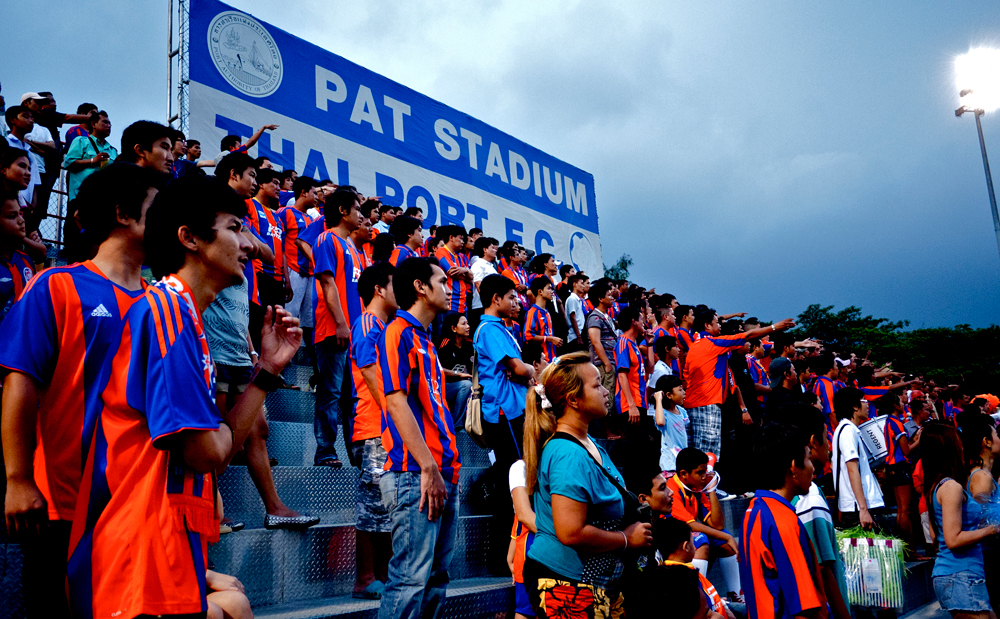
The Next Play
But as everyone we spoke to also points out, the clubs and even the league can’t do this alone, such major grassroots changes need to come from the FA. “They need to become more professional” says Thanya, “They need to implement a better structure for the whole game, not just at the top levels.” The Thai FA would clearly argue that they’re doing their best, and Ong-arj does point to successes in international tournaments at the U12, U14 and U16 levels as signs that their network of youth coaches and scouts is starting to work. He also explains that, just like the clubs, the FA is still very young. “Maybe in the next few years we’ll be better, more professional. In Europe, in England, they’ve been professionals for around one hundred years. In Thailand, we were established 3-4 years ago, so we haven’t had enough time to develop properly.”
But Komkrit isn’t holding his breath, “The people who really want to improve Thai football don’t have the power or the authority to do so. Those working in the FA and the TPL don’t really know and understand football.“
Tadthep is less pessimistic, but agrees that it needs a lot of work and investment not just from the Thai FA but also the government. “The FA have a lot of good knowledge and human resources, they know how to develop football but they need financial support, perhaps from the government.”
That might actually be coming, with Yingluck Shinawatra recently announcing that the government is planning to invest B1 billion in grassroots sport, albeit with a large amount of support being generated from the private sector. If their latest populist policy comes into practice, then it may help national teams of the future have a realistic chance of becoming a force again at the international level.
As Tadthep points out, “If North Korea can qualify for a World Cup, why can’t we? We have the pitches and the players, we just need to use all these resources better.”
The other thing that is clearly needed is time. To succeed in 2020, coaches need to start work today with Thailand’s 12, 13 and 14-year-old players. There also needs to be a competitive structure in place for them to learn the mental strength and discipline to succeed. “Thailand can be competitive again if the league is strong. But we need more time,” says an optimistic Thanya.
Unfortunately, perhaps the biggest question mark of all is whether there will still be a strong league in the foreseeable future. As Komkrit argues, survival won’t be down to the authorities or the clubs, but the fans. “But if the authorities don’t help Thai football progress to a better level, people will lose faith. And that would be the end of Thai football.”
Then overtaking Belize in the world rankings would be the least of our problems.
Four young players all tipped to be Thailand’s next big thing
Name: Chanathip Songkrasin
Age: 16
Position: Midfield
Skill: Small, quick and with great technical skill and style, he’s been touted as Thailand’s answer to Lionel Messi and already made his debut for the national team this year.
Club: BEC Tero Sasana
Name: Sakda Fai-in
 Age: 19
Age: 19
Position: Defence
Skill: Despite his young age, he’s made a name for himself thanks to his strength and stamina at the back for Osotsopa this season.
Club: Osotspa M-150 Saraburi
Name: Anawin Jujeen
 Age: 25
Age: 25
Position: Midfield/Forward
Skill: With great technique and fast feet, Anawin has been playing the game at the highest level for the past five seasons and has made four appearances for the national team.
Club: Bangkok Glass
Name: Saratch Yooyen
 Age: 20
Age: 20
Position: Midfield
Skill: The young midfielder first got notice at Phuket FC before being snapped up by Muangthong. Known for his speed, trickery on the ball, powerful shot and his dead ball ability, he’s a particular threat when breaking from deep.
Club: Muangthong United
Bangkok’s Thai Premier League stadiums undergo a transformation






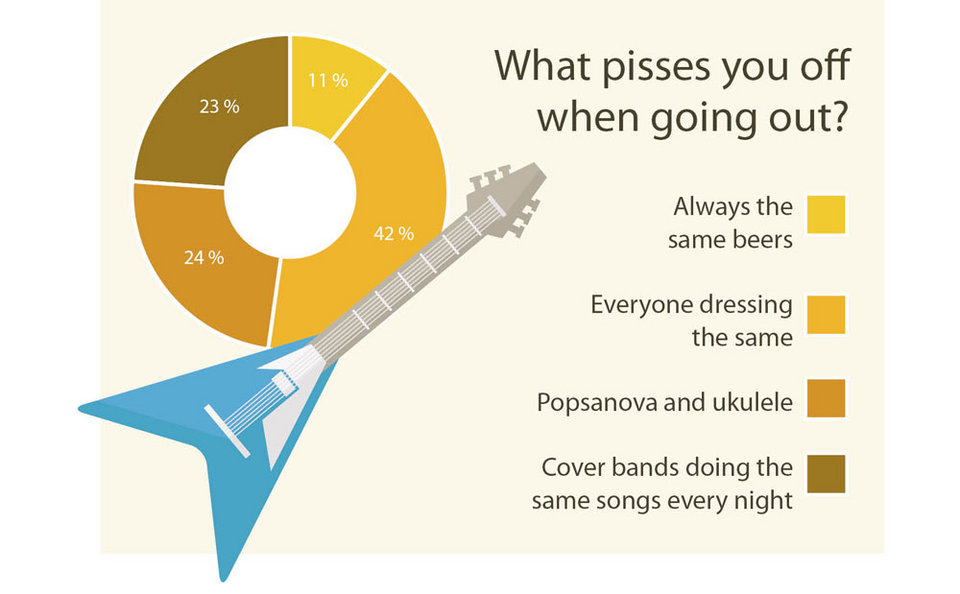












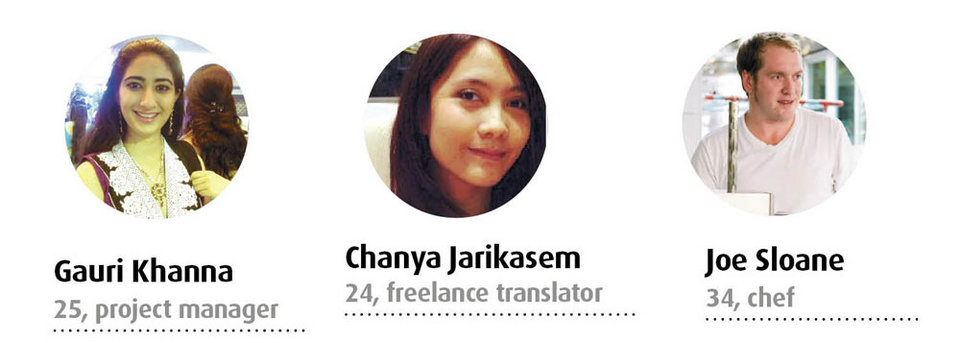

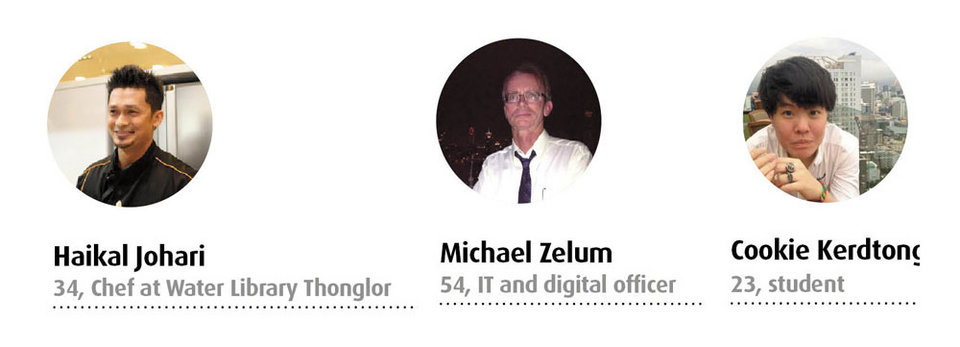
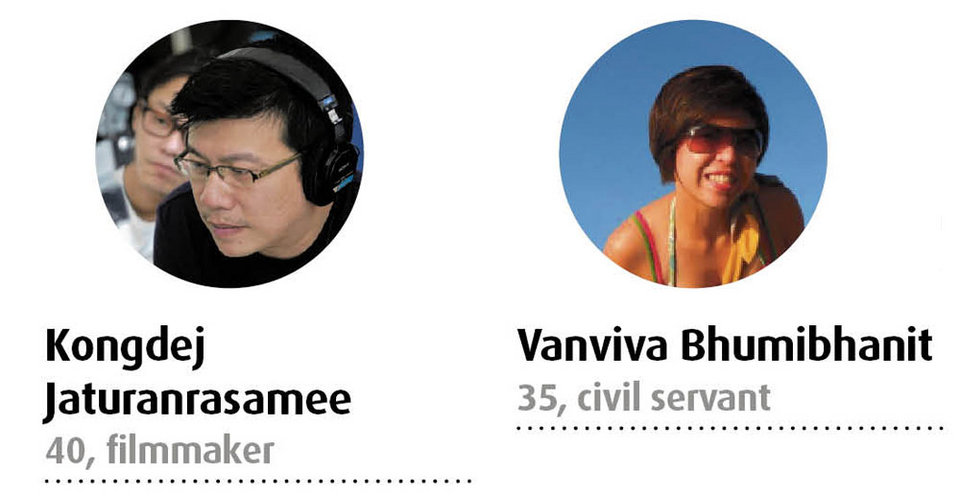
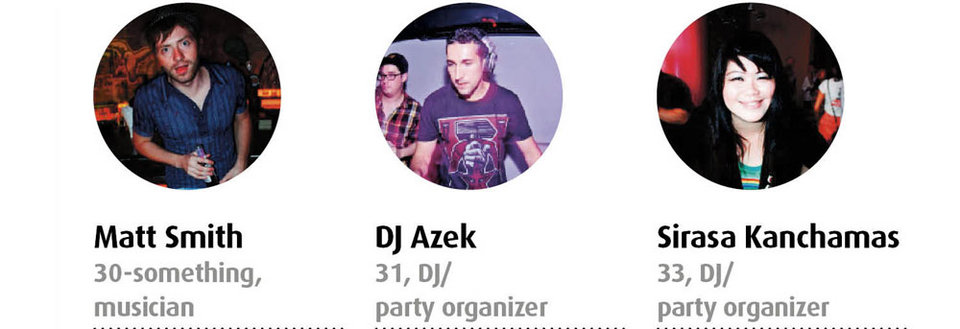










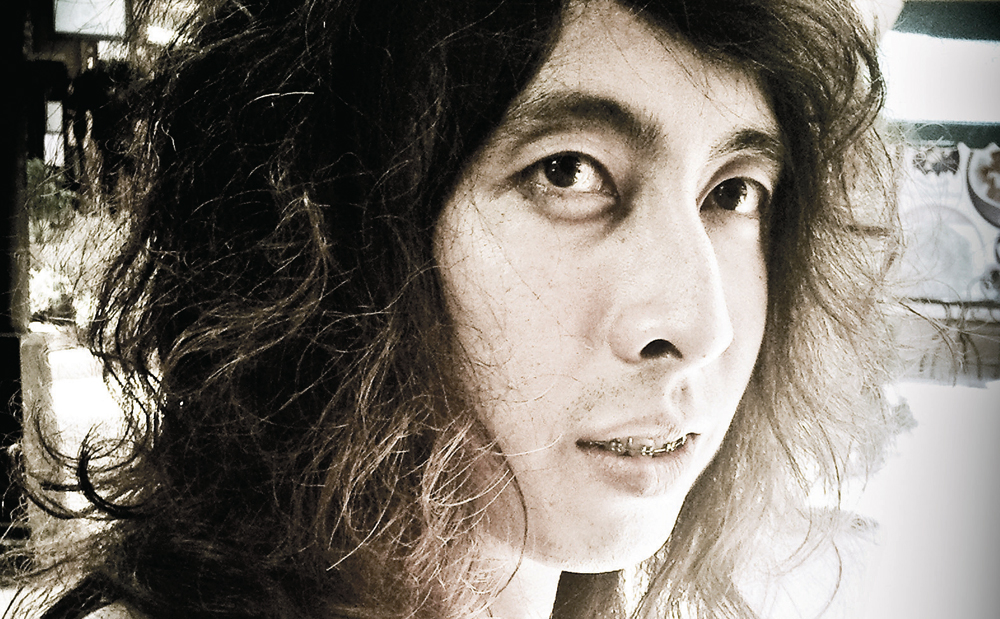 Neither my family nor my girlfriend mind what I do—they know I’m not a little boy. A job is a job. All my guy friends love it, they want to come and see me shoot.
Neither my family nor my girlfriend mind what I do—they know I’m not a little boy. A job is a job. All my guy friends love it, they want to come and see me shoot.
 There isn’t really a line separating art and nudity from pornography because it’s subjective, and the photographer is dead once the magazine is in the audience’s hands. As a human being, we can’t deny that sex is one of the most natural influences in the world.
There isn’t really a line separating art and nudity from pornography because it’s subjective, and the photographer is dead once the magazine is in the audience’s hands. As a human being, we can’t deny that sex is one of the most natural influences in the world.
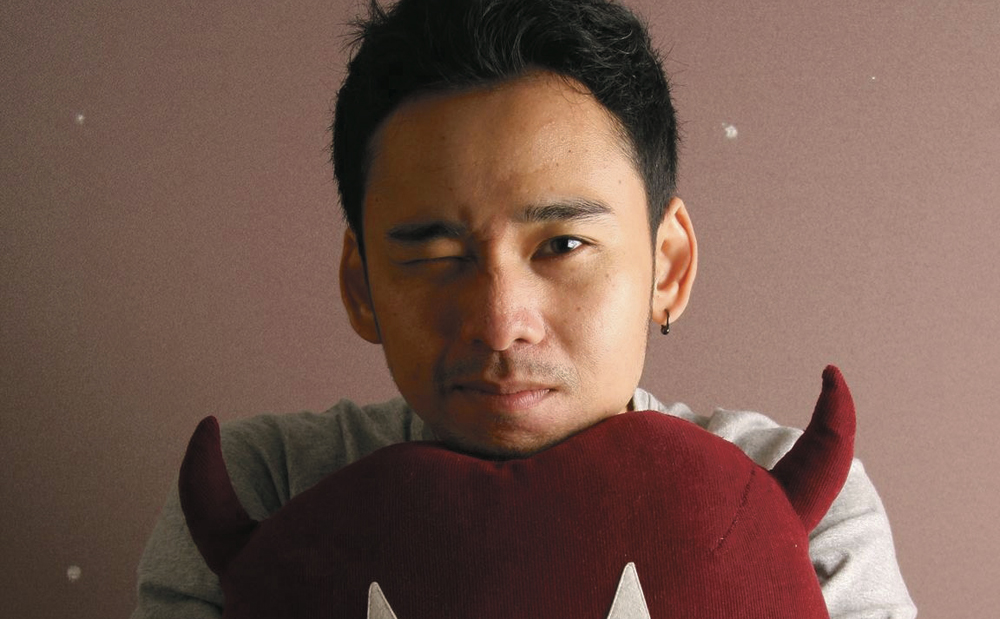 All my guy friends think my job’s great because I get to hang out with lots of hot girls. As for my girl friends, they’re always asking questions about whether a model’s breasts are real or the latest techniques for a good physique.
All my guy friends think my job’s great because I get to hang out with lots of hot girls. As for my girl friends, they’re always asking questions about whether a model’s breasts are real or the latest techniques for a good physique.
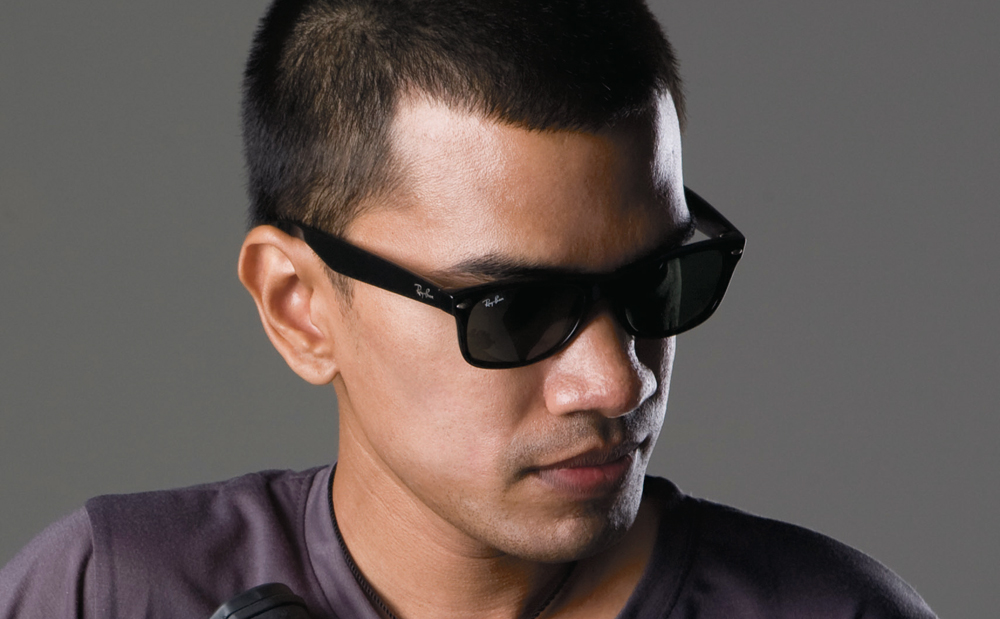 My family and girlfriend are very happy for me, they know it’s my dream job. Others are impressed that I work for such a well-known magazine, especially my male friends.
My family and girlfriend are very happy for me, they know it’s my dream job. Others are impressed that I work for such a well-known magazine, especially my male friends.
 I was working as a coordinator for a sexy magazine, when my boss thought that because I dealt with nude models, I should also learn how to style them.
I was working as a coordinator for a sexy magazine, when my boss thought that because I dealt with nude models, I should also learn how to style them.





 Age: 19
Age: 19 Age: 25
Age: 25 Age: 20
Age: 20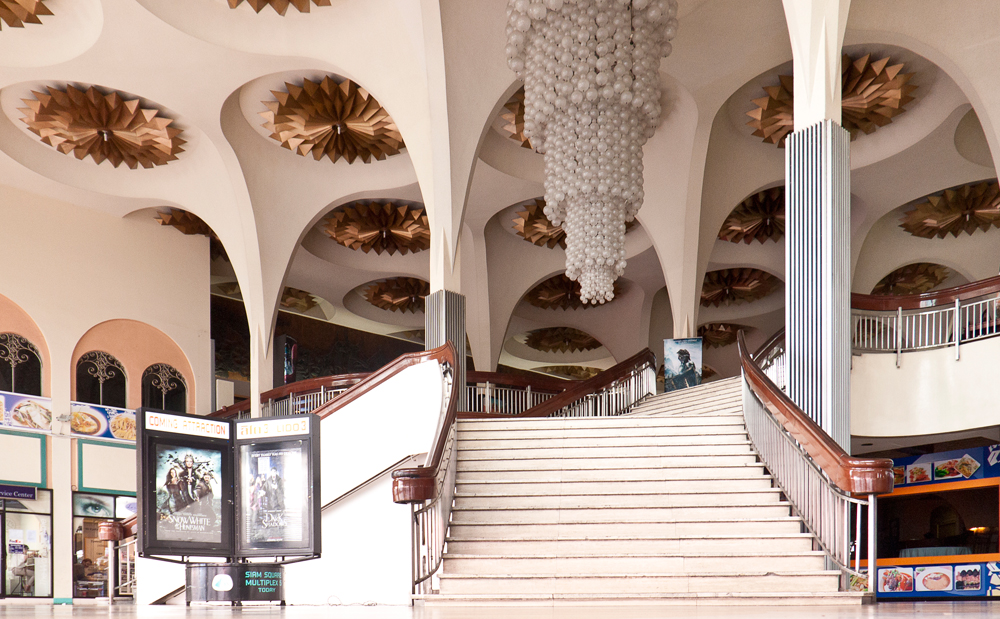

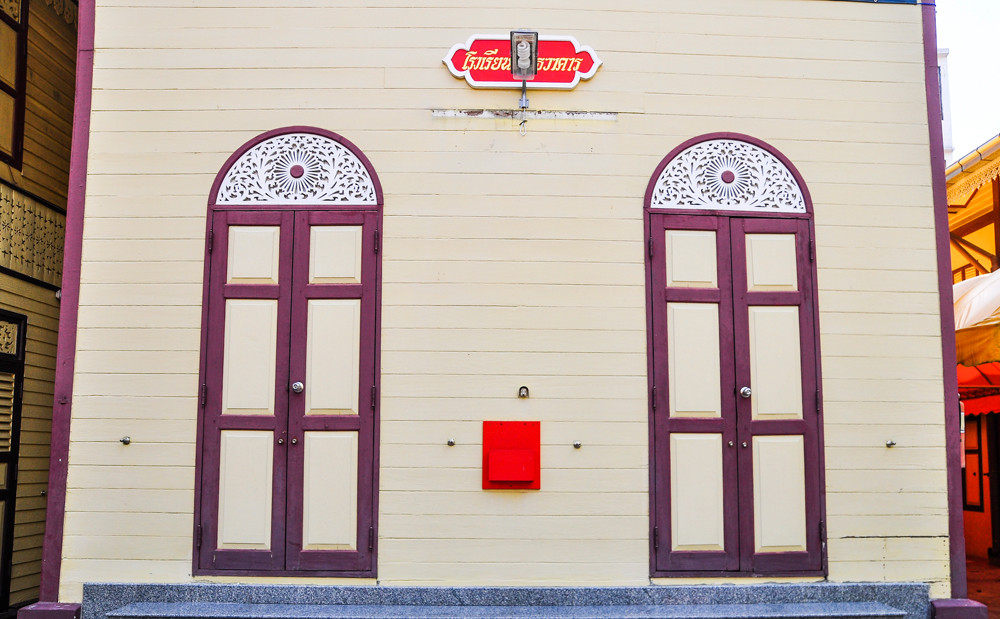



 Sawai, 53, arrived in Bangkok from Roi-Et nearly 30 years ago. He started off working as a waiter and construction worker. But wanting more independence and higher pay, he decided to get into taxi driving.
Sawai, 53, arrived in Bangkok from Roi-Et nearly 30 years ago. He started off working as a waiter and construction worker. But wanting more independence and higher pay, he decided to get into taxi driving. Arun, 47, loved being a motorcycle taxi rider for more than 10 years. But when the economy crashed in 1997, there were no clients left for him to ply his trade. After a break of two years, Arun returned to Bangkok and decided to throw away his helmet and sit behind a steering wheel instead.
Arun, 47, loved being a motorcycle taxi rider for more than 10 years. But when the economy crashed in 1997, there were no clients left for him to ply his trade. After a break of two years, Arun returned to Bangkok and decided to throw away his helmet and sit behind a steering wheel instead. Sombat, 43, owned a transport business delivering goods for 7-Eleven, when he decided to ask for a bank loan to buy a taxi. When it was approved, he decided to leave the business to his wife and started driving.
Sombat, 43, owned a transport business delivering goods for 7-Eleven, when he decided to ask for a bank loan to buy a taxi. When it was approved, he decided to leave the business to his wife and started driving. Eight years ago, Chief Petty Officer 1st Class of Thai Navy Yossapat Pholprash, 44, decided to moonlight as a taxi driver to make ends meet. But it actually got him further into debt and, finally, his wife left him. But he insists his life is much better now because of his taxi job.
Eight years ago, Chief Petty Officer 1st Class of Thai Navy Yossapat Pholprash, 44, decided to moonlight as a taxi driver to make ends meet. But it actually got him further into debt and, finally, his wife left him. But he insists his life is much better now because of his taxi job.  When his export clothing business went downhill, Pongsak Hongthong, 61, asked friends what to do next. One of his former employees drove a taxi and suggested he give it a try. Pongsak closed his factory, got a cab and never looked back.
When his export clothing business went downhill, Pongsak Hongthong, 61, asked friends what to do next. One of his former employees drove a taxi and suggested he give it a try. Pongsak closed his factory, got a cab and never looked back.